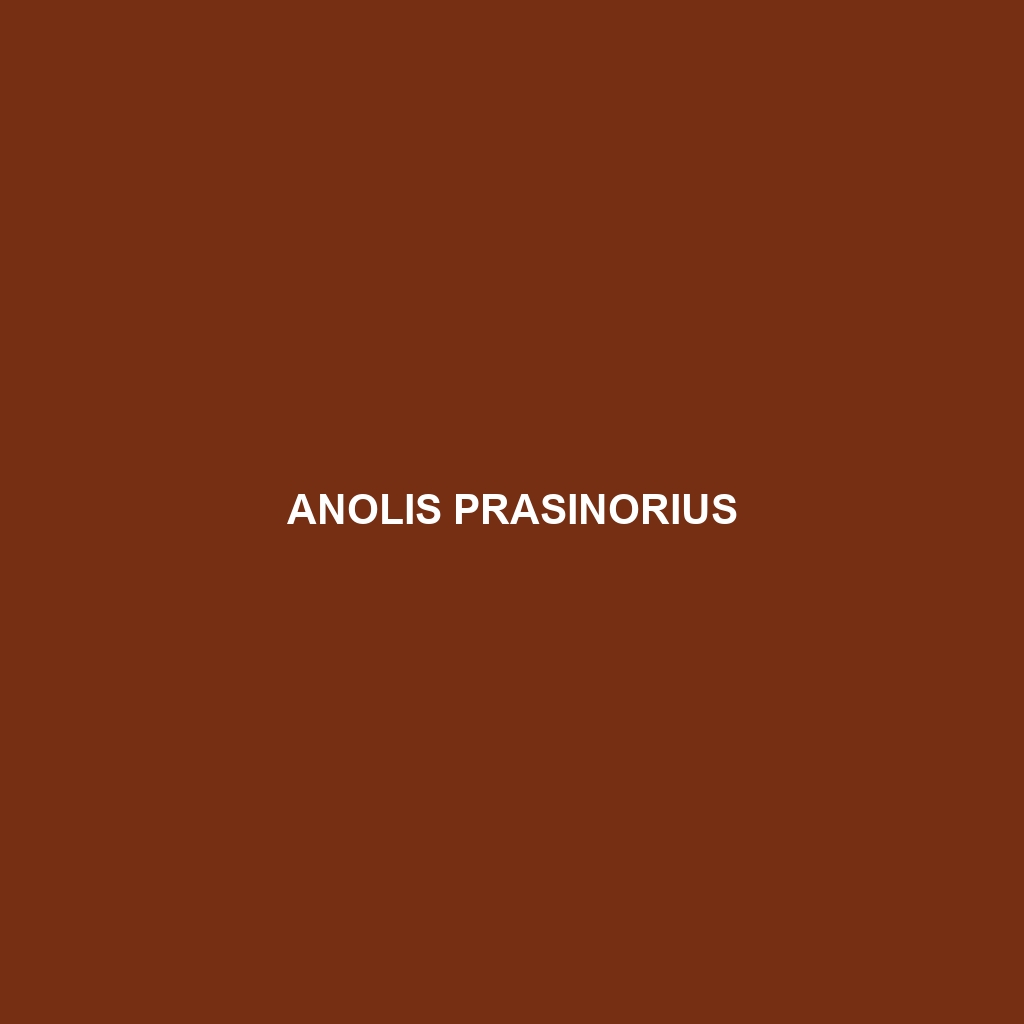Common Name: Anolis prasinorius
Scientific Name: Anolis prasinorius
Habitat:
Anolis prasinorius is primarily found in the tropical forests of Central America, specifically in countries such as Costa Rica and Panama. This lizard thrives in humid environments, often residing in lowland rainforests and areas with abundant vegetation. Their preference for arboreal habitats allows them to be found climbing on tree trunks and branches, where they are well-camouflaged among the foliage.
Physical Characteristics:
Anolis prasinorius typically measures between 4 to 6 inches in length. It is known for its vibrant green coloration, which aids in blending with its surroundings. This species features a slender body, elongated limbs, and a distinctive dewlap that is often bright yellow or orange, especially during courtship displays. The smooth scales and elongated tail contribute to its agile movements, making it an adept climber.
Behavior:
Anolis prasinorius exhibits a variety of intriguing behaviors, including territorial displays and complex mating rituals. Males are known to perform push-up displays and extend their dewlaps to attract females and establish dominance over competing males. This lizard is diurnal, spending its days basking in sunlight and foraging for food, while being quick to retreat to the safety of vegetation if threatened.
Diet:
This species is primarily insectivorous, feeding on a diet that includes small insects such as ants, beetles, and crickets. Occasionally, Anolis prasinorius may consume other small invertebrates. Its foraging behavior involves active hunting, and the lizard displays agility and speed when catching prey. This diet not only supports its energy needs but also plays a vital role in controlling insect populations in its habitat.
Reproduction:
During the breeding season, which typically occurs in the warm months, male Anolis prasinorius engage in elaborate courtship displays to attract females. After mating, females lay clutches of 1 to 3 eggs in hidden spots within the leaf litter or soft soil, providing protection from predators. The eggs usually hatch in 4 to 6 weeks, resulting in juvenile lizards that are independent from birth.
Conservation Status:
As of now, Anolis prasinorius is categorized as ‘Least Concern’ according to the International Union for Conservation of Nature (IUCN). However, its habitat is at risk due to deforestation and urbanization, which poses a threat to local populations. Continuous monitoring is vital to ensure that this species remains stable in the wild.
Interesting Facts:
One fascinating aspect of Anolis prasinorius is its remarkable ability to change color, although not as dramatically as some other lizard species. This adaptation helps it communicate and camouflage effectively within its environment. Additionally, Anolis species are known for their high levels of biodiversity, making them important indicators of ecological health.
Role in Ecosystem:
Anolis prasinorius plays a crucial role in its ecosystem as both a predator and prey. By controlling insect populations, it helps maintain ecological balance. Furthermore, as a food source for larger predators such as birds and snakes, this lizard contributes to the food web dynamics within its tropical habitat.
